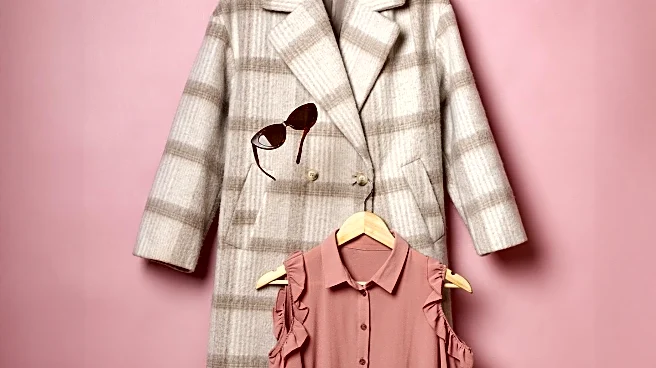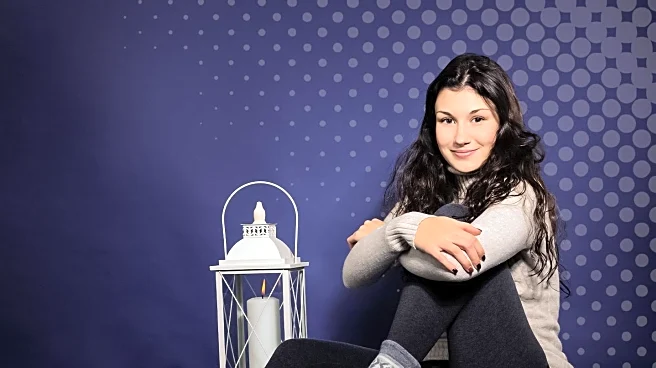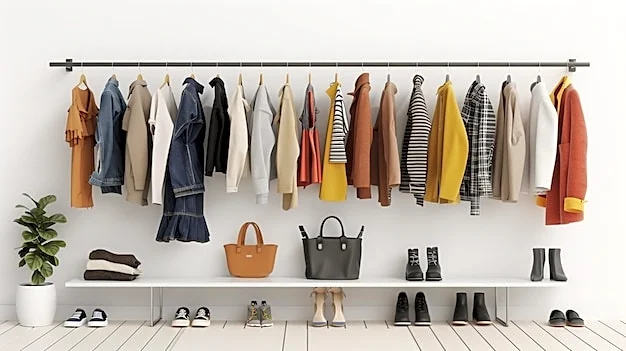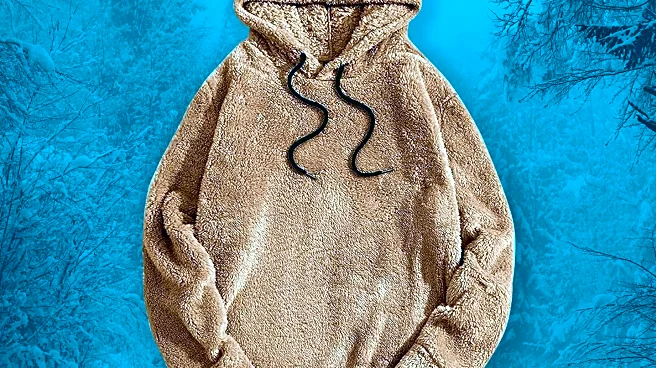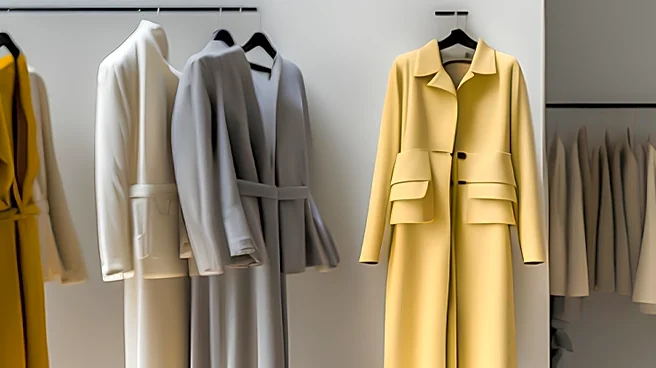What's Happening?
A recent column in Vogue discusses the challenges and considerations involved in selecting a transitional coat for fall. As the season progresses, temperatures fluctuate, making it difficult to choose
appropriate outerwear. The column emphasizes the importance of having a versatile coat that can adapt to varying weather conditions, offering both warmth and style. It suggests that a good transitional coat should be warm enough for chilly days, around 55 degrees Fahrenheit, and allow for layering as temperatures drop further. The column also highlights the fashion possibilities of different coat styles, such as quilted liners and oversized wool jackets, which can be styled in various ways to suit different occasions.
Why It's Important?
The discussion on transitional coats is significant as it addresses a common fashion dilemma faced by many during the fall season. The ability to choose the right outerwear not only impacts personal comfort but also reflects one's style and adaptability to changing weather. This topic is relevant to the fashion industry, as it influences consumer choices and trends in outerwear design. Designers and retailers may benefit from understanding these preferences, potentially leading to increased sales of versatile and stylish coats. Additionally, the emphasis on layering and adaptability aligns with broader fashion trends that prioritize functionality and personal expression.
What's Next?
As the fall season continues, consumers may seek more guidance on selecting outerwear that balances warmth and style. Fashion brands and designers might respond by offering a wider range of transitional coats that cater to diverse preferences and weather conditions. Retailers could also focus on marketing strategies that highlight the versatility and practicality of their outerwear collections. Furthermore, as climate patterns become increasingly unpredictable, the demand for adaptable clothing may grow, prompting innovation in fabric technology and design.
Beyond the Headlines
The exploration of transitional coats touches on broader themes in fashion, such as sustainability and cultural influences. As consumers become more conscious of environmental impacts, there may be a shift towards coats made from sustainable materials or those that offer longevity through versatile styling. Additionally, the cultural significance of outerwear as a form of self-expression may lead to more personalized and diverse fashion choices, reflecting individual identities and values.
